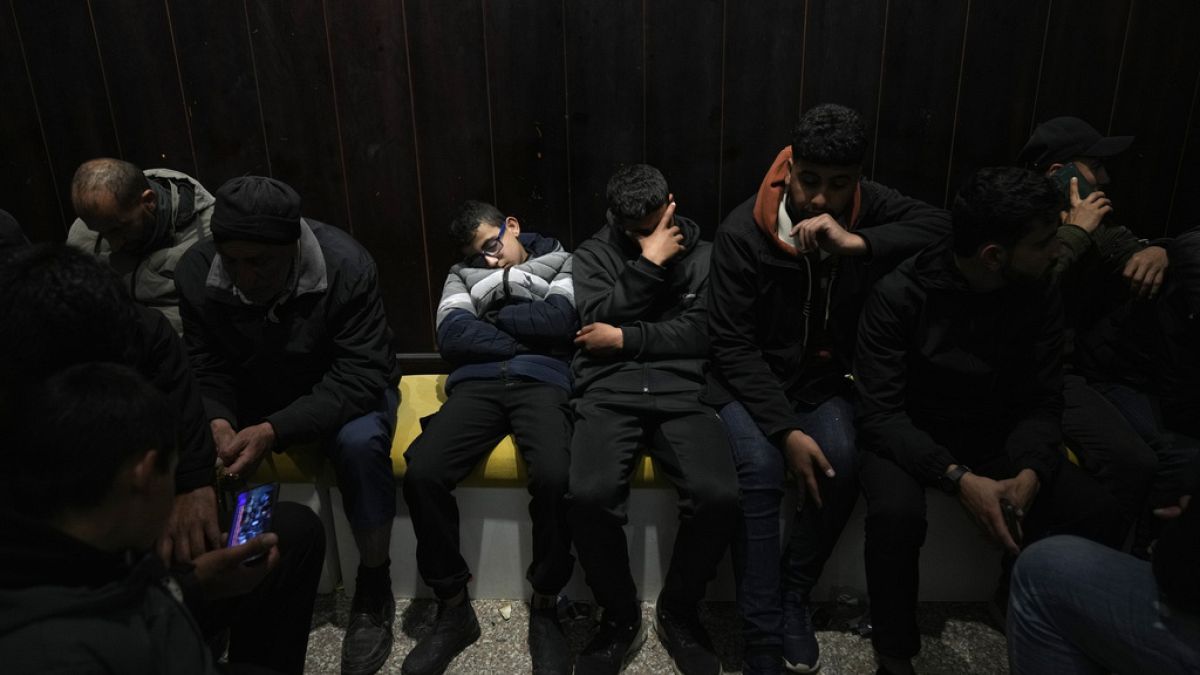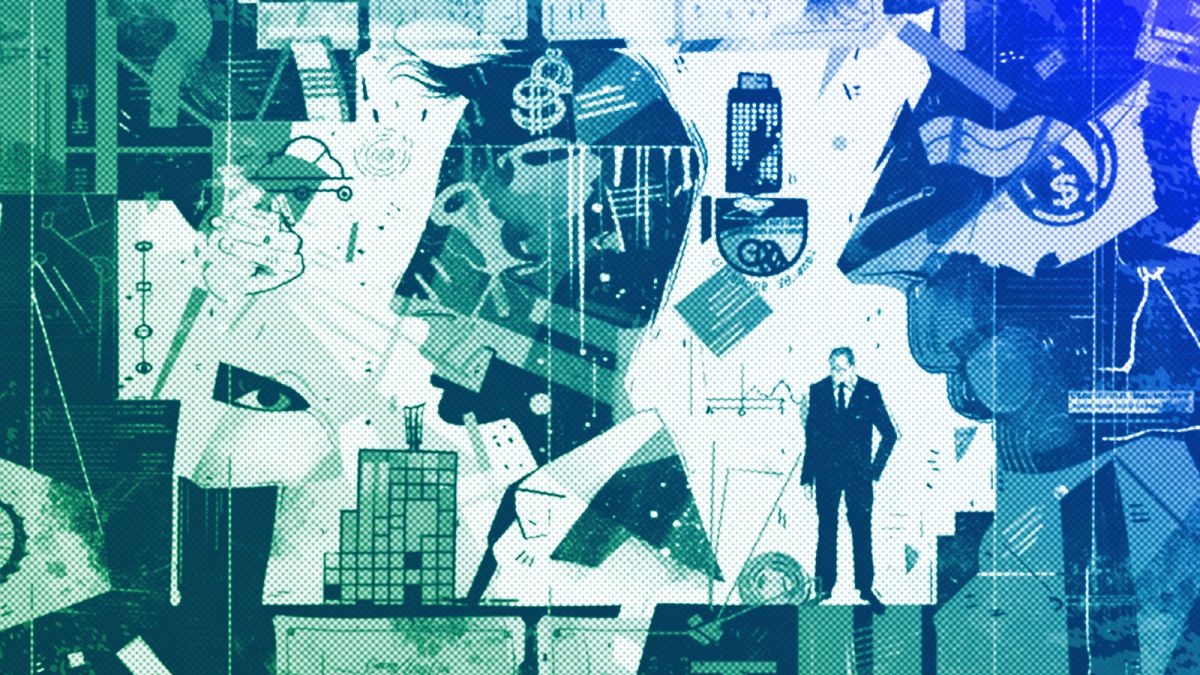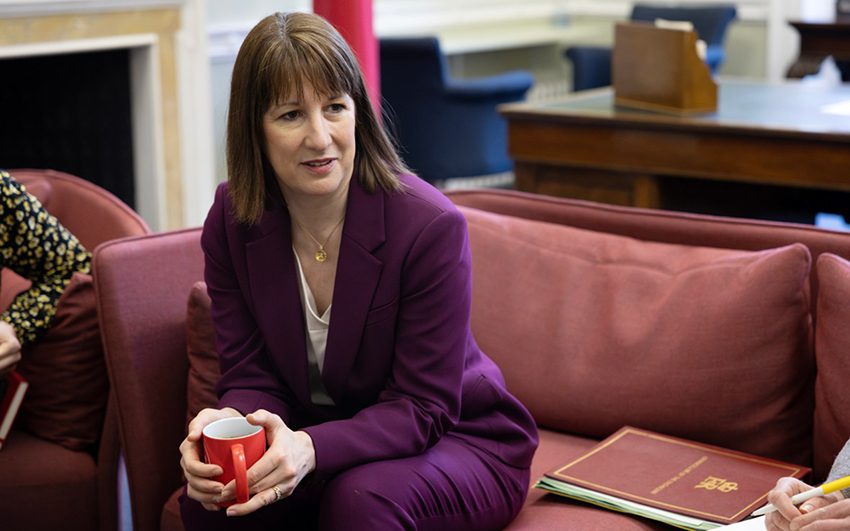Europe’s new normal: High energy bills, fading industry and one chance to fix it
German manufacturers are being strangled. The EU is feeling the pinch. Mario Draghi on Monday warned the EU may be staring at ‘slow agony.’

ZIMMERN OB ROTTWEIL, Germany — You’ve never heard of Hans Keim Kunststoffe, but you’ve almost certainly come across one of its products.
They’re protecting museum paintings, covering MRI machines during a hospital visit, forming a mobile caravan’s sunroof and even hanging over the seats of an amusement park ride in China.
These plastic parts are all made in a corrugated iron factory ringed with carefully planted shrubbery on the edge of Zimmern ob Rottweil, a small town nestled in Germany’s Black Forest region about a half-hour drive from the Swiss border.
It’s a small but energy-intensive business: The company runs eight ovens that heat up and mold plastic sheets into whatever the customer requests. The largest oven is the size of a small room, with enough space to fit several people doing jumping jacks.
Running those furnaces has gotten a lot more expensive since Russia’s invasion of Ukraine. Before the war, the annual electricity bill was about €80,000. It’s nearly doubled since then, said managing director Christoph Keim, son of the company’s founder, a chemist who got his start after World War II with a company making disinfectants. Prices for customers rose, while profit margins shrank.
Eventually, costs receded. Relief came. But things didn’t return to their pre-war level. Instead, Keim entered a troubling new normal, where energy prices are double those of overseas rivals.
That reality is slowly eroding thousands of similar companies across Europe’s industrial heartland. Germany, Europe’s manufacturing powerhouse, has fallen into a recession expected to extend through the year’s end. Even global German stalwarts like Volkswagen, a name almost synonymous with the mighty Das Auto itself, are staring at unprecedented plant closures.
More broadly across the EU, output from key energy-intensive sectors like chemicals and steel is declining. Plants are shutting down. Industrial champions are announcing layoffs.
This low-wattage economy has policymakers issuing existential warnings — if things don’t change, they say, European industry will shrink to irrelevance. On Monday, Mario Draghi, the EU economic guru and former European Central Bank chief, offered a similarly dire message, using elevated energy bills to make his case for a massive overhaul of how Europe does business.
“The moment is really worrisome,” he said while presenting his report. “We cannot ignore it any longer.”
It’s a diagnosis EU officials in Brussels, who ordered up Draghi’s assessment, fully endorse and are already infusing into their policy work. Ursula von der Leyen, the EU’s top executive, called Draghi’s pitch to accelerate Europe’s green industry “basically the same idea we’re pushing forward.”
But time is short. While cheaper renewable energy is coming, it will take years to create structural change. In the meantime, Chinese overproduction is eating into Europe’s market share at home and abroad, and new, power-hungry technologies like electric vehicles and artificial intelligence will strain local power networks.
“For the first time since the Cold War,” Draghi said, “we must genuinely fear for our self-preservation.”
The new normal
By the time an underwater explosion that detonated off the coast of Germany critically damaged the Nord Stream pipelines in September 2022, the flow of pipeline gas between Russia and EU countries had reduced to a trickle. The severed connection underscored an emerging truth: There was no turning back.
Europe escaped the immediate energy shock that followed the Russian invasion of Ukraine better than expected. Prices shot up, but reserves didn’t run out. Countries found new fuel sources. Households, on the whole, kept the heating on, helped by selective industry shutdowns.
Since then, energy prices have fallen. But they remain higher than they were before 2022, and crucially, higher than those of competitors. The International Energy Agency estimates that in 2023, power in Europe cost twice as much as in the U.S.
The reason is largely tied to the switch from cheap Russian gas to costly liquified natural gas. Unlike Moscow’s pipeline gas, LNG doesn’t come with the benefit of long-term contracts that stabilize prices. The fuel simply goes to the highest bidder. The fickle free market decides.
LNG also carries higher transport costs and needs to be liquified and de-liquified — that’s extra cash at virtually every step.
Thankfully for Europe, it had “the ability to pay very high prices,” said Helen Thompson, a professor of political economy at the University of Cambridge. But the continent now relies on gas that costs four to five times more than it does in the U.S.
It’s the consequence of a bad bet. For years, the EU — and Germany specifically — trusted Russia to power European industry, overlooking the rise of a dictator set on overturning the global order. Now European industry is instead yoked to fuel from the U.S. and the Middle East.
“I think the new norm is significantly more dependency on LNG coming from Qatar and from the U.S.,” said Thompson. That means exposure to Middle East conflagrations as well as yo-yoing U.S. politics.
“It’s pick your poison,” she said.
Powering down
Christoph Keim describes his plastic molding company as a “handshake” business; one that runs on quality, reliability and personal trust between him and the customer.
He’s proud of his employees. One of them works as a tattoo artist on the side, Keim said as he showed off a picture of his co-worker’s inaugural ink, a finely etched face of Jesus done in thin black lines. Another was a Syrian refugee who worked in a government office before the civil war.
When prices shot up in 2022, the company had to carefully go through its product line. Where it could, it raised prices. Some products didn’t make economic sense anymore and were discontinued. There also had to be layoffs.
“As an industrial country, we need electrical power at a reasonable price. If the price is too high, nobody will invest and nobody will buy,” said the business owner.
Right now, not enough people are doing either. German industrial production is in steady decline and, excluding Covid, is hovering around a 10-year low.
BASF, the largest chemical producer in the world, has lost a third of its stock market value since the energy shock. And major steel producer Thyssenkrupp has closed a plant and is curtailing production.
These industries are the building blocks of modern society — pharmaceuticals, microchips, water purification, cars. Nearly everything requires chemicals or steel.
“Germany is clearly the laggard in economic activity or performance in Europe right now,” said Samer Mosis, head of fundamentals at market data provider Energy Aspects. “In the long term, it really brings into question the country’s position in the global industrial order.”
But others are also suffering. Industrial output is below its 2021 level in France and Italy as well. And the EU in total has lost over 800,000 manufacturing jobs since the pandemic, according to an analysis from the European Trade Union Institute.
“Energy prices are now a headwind,” said Olivier Rakau, chief German economist at Oxford Economics. “There’s no good reason to produce certain things in Europe from a business perspective.”
It’s been a particularly tough period for European steel. The pandemic put construction on halt for a while, reducing demand. Then came the energy shock. Meanwhile, Chinese overproduction made it hard to compete both abroad and at home.
The result? EU steel production in 2023 hit its lowest level since 1960, when steel lobby Eurofer started keeping records, said Adolfo Aiello, the organization’s director for energy and climate.
The shock couldn’t have come at a worse time. The steel industry is trying to strip carbon from its production, swapping out natural gas for either hydrogen or electric furnaces. Those alternatives are vastly more energy-intensive. Eurofer estimates that the required electrification — equal to the total electricity use of Belgium twice over — will double the steel sector’s power consumption.
Where the sun does shine
With industry fading and cheap gas a European anachronism, green advocates have jumped at the chance to push their preferred solution: renewable energy.
A brew of policy and necessity has sent carbon-free energy surging in Europe since Russia rolled its tanks into Ukraine. Last year, the EU got 44 percent of its electricity from renewable sources, up from 37 percent before the war. Although the decision to shut down its nuclear power plants has been roundly criticized, Germany is expanding wind and solar at breakneck speed.
And while it’s the U.S. that has recently won accolades from green advocates for its Inflation Reduction Act, the EU has had a carbon emissions trading scheme for nearly 20 years now. That’s contributed to higher electricity prices, but it’s also made a real difference to curb emissions, with each ton of carbon costing polluters around €60.
But Christoph Keim, in his white button-down shirt with rolled-up sleeves, owner of a BMW and with a luxury watch on his wrist, is no green. Brussels’ plan to phase out traditional combustion engine cars was a mistake, he said. Carbon taxes are weighing down business. The green transition is making people poorer.
That made it all the more surprising to see the neat rows of solar panels lined up on his factory roof.
The installation finished two months ago. Keim was unsentimental about the purchase. It wasn’t driven by any desire to save the planet: “Solar is an investment, and the question is, what is the return of investment?”
When Keim first looked at installing solar panels, they would have cost €150,000. Two years later, when he decided to go ahead, they had fallen to €90,000. Keim estimates he’ll make his money back in eight years by selling power back to the grid.
Renewable power isn’t a panacea for industry, though, at least not yet.

While renewable installations are booming, they won’t allow Europe “to structurally decrease its electricity costs … before the mid-2030s,” said Simone Tagliapietra, an industrial policy expert at the Bruegel think tank.
For now, solar is the fastest-growing renewable energy source. Cheap, Beijing-subsidized Chinese panels are everywhere. For customers, that’s a cost-effective good. For politicians, it’s angst-provoking. Europe’s solar manufacturers are withering without similar state support, and China now has near-complete control over the continent’s solar equipment.
“China is currently supplying 95 percent of European solar supply,” said Belinda Schaepe, an analyst at the Centre for Research on Energy and Clean Air. “That is very unlikely to really change in the short term.”
Unlike natural gas, solar panels keep producing for years once installed. But China, a powerful geopolitical rival, now effectively controls the EU’s photovoltaic rollout.
Survival of the fittest
Solving these conundrums is now a top EU priority as it unveils a new slate of senior officials this week.
Draghi set the stage Monday, making a grand pitch to reset Europe’s economic policy. The entire bloc must come together to share more resources, completely rethink its energy market and invest billions in the industries of tomorrow.
“Do this or it’s a slow agony,” he quipped to laughter when asked whether his report’s message was effectively, “do this or die.”
Standing next to Draghi, Ursula von der Leyen proclaimed her fealty to the vision. She said the report’s calls to massively invest in industries that help cut carbon and slash energy costs are already “mirrored in” a legislative proposal in the works.

That bill, dubbed the “Clean Industrial Deal,” is part of von der Leyen’s vow for the first 100 days of her second term atop the European Commission. That has set off an intense lobbying period in Brussels, as industries and advocates vie to get their priorities woven into the legislation.
To start, specialists and industry agree that Europe’s power grids are outdated, poorly connected, and lack adequate storage for excess energy — an issue Draghi namechecked on Monday. The fractured, aging setup makes it harder to benefit from the cost-benefits of renewable energy, which too often can’t get where it’s needed or get stashed away for future use.
Then there’s the thornier question of how to prioritize homegrown industries. The EU is historically a free market champion but is under considerable pressure to impose tariffs on cheap green imports, and to ensure only European energy firms get government contracts.
Draghi urged protections for certain industries, a necessary pivot given Europe’s history as “the most open economy in the world” has left it “more vulnerable than others.”
“Certainly, China could offer the cheapest route to meeting our climate targets,” Draghi said. “But China’s state-sponsored competition represents a threat to developing our clean industries.”
Brussels must also cut a Gordian Knot of sorts: It wants to let governments subsidize local manufacturers — particularly in the vague but buzzy “clean tech” industry — but can’t let the Netherlands or Spain use their wealth in a way that Cyprus or Romania can’t. It’s yet another situation, Draghi said, that requires an EU-wide solution.
“The reasons for a unified response have never been more compelling,” he said.
Meanwhile, any delays mean more jobs lost, more industries leaving Europe — and less hope in the European project. In the recent French elections, Jordan Bardella, star of the far-right Rassemblement National, blamed Germany for high energy prices in France.
“De-industrialization is ongoing right now,” said Marco Mensink, director general of the European Chemical Industry Council. “We have until about 2030. We can’t last longer.”
The EU’s roots are in heavy industry, with the foundation of the European Coal and Steel Community in 1951. Major industrial decline would be a heavy blow, symbolically and economically.
“Budget deficits are exploding in most economies,” an anxious EU diplomat said, granted anonymity to speak freely. If the EU can’t reduce energy prices, the “welfare state is at stake, military and defense capabilities are at stake.”
In short: “We’re screwed in case we’re not fast enough.”
What's Your Reaction?

















































